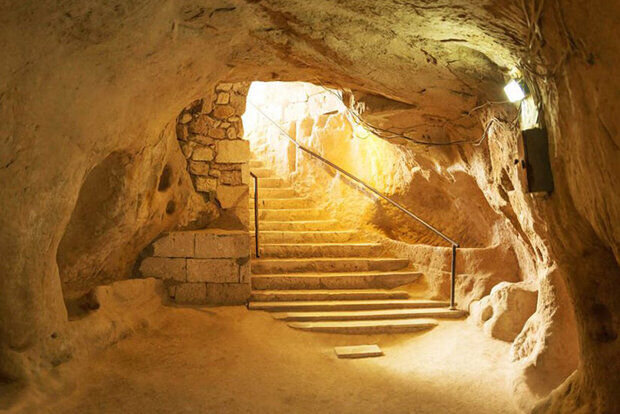Archaeologists shed more light on massive underground city central Iran

TEHRAN – Iranian archaeologists have uncovered what they say might be the entrance to a massive underground city located in Taftesh, central Iran.
“The first signs of access to the main site of the underground city of Tafresh were revealed during a recent week of excavations,” IRNA quoted Tafresh Governor Abdolreza Hajalibeigi as saying on Tuesday.
“The hand-carved underground city is situated under the modern city of Tafresh… and with an area of three hectares it is one of the largest underground areas in Iran and even in West Asia.”
The first archaeological season was carried out last summer on the underground city and the second is currently underway, the official noted.
Based on the academic findings, the creation of handmade troglodytic architectural sites depends on several factors including climatic and geographical conditions, defense, security, durability, and religion, which were deeply tied with the cultural, political, social, and economic circumstances. This architecture can be classified into various formal types in terms of their external form, internal space, and function (religious, tombs, residential, and shelter).
The handmade troglodytic architecture is a distinctive kind of architecture, which does not require major construction materials and consequently very low environmental load since its creation is majorly by extraction of space rather than the addition of mass. Architecture by subtraction rather than addition provides many opportunities that call for comprehensive research and analysis.
As there is no obligatory method in making spaces rather than material cohesion, there is no priority in constructing a troglodytic structure, either from the roof or from the floor. Dealing with stone blocks, rocks, and piles of earth requires a variety of tools as an ax, hammer, chisel, and sledgehammer to shape the interior space.
In Iran, many magnificent cases of this architecture have taken place in different regions due to its various climates. This unique architecture is at odds with the conventional settlement patterns and construction methods and is always can take advantage of the mountains and valleys on the floor or wall, which is a good way to control climate fluctuation in different regions.
AFM/
Leave a Comment